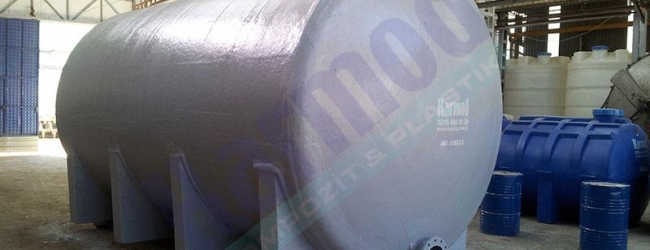
Tanks have become increasingly prevalent in our surroundings in recent years. This is primarily due to the growing need for these tanks and the advantages they offer to users, along with their affordability.
In terms of price, the most cost-effective tanks are the polyethylene water tank models. These tanks are also suitable for food storage and can be used for chemical storage. However, when it comes to chemical storage, the most suitable tanks are those made from polyester.
Since all storage products offer many years of use, they ultimately pay for themselves over time. They provide maximum benefits to their users. Fuel tanks, being located underground, provide security, and over time, they pay for themselves financially. After amortization, their continued use will result in significant savings for you.
Features of Water Tanks
Tanks are manufactured to serve various purposes. Before the production of these tanks, R&D and analysis studies were conducted. These analyses led to the creation of tank models and the commencement of production.
During R&D, the production processes of other manufacturers were monitored and analyzed. Based on the data obtained from these analyses, certain errors that may occur before, during, or after production were identified. These errors were rectified, resulting in tanks with longer lifespans. All these efforts are collectively referred to as production improvement.
Within the scope of R&D, discussions were held with people who use or could use these tanks, and the needs and problems of consumers were identified. Models were redesigned based on the majority's requirements, resulting in specialized models for specific purposes, such as pickle tanks. Since the needs and complaints of consumers were addressed, the tanks were produced innovatively.
As part of R&D, the raw materials to produce these tanks were also determined. The selected raw materials are substances that do not harm the contents that will be stored. Each raw material has its unique advantages, derived from the tank's design. All storage products come with a two-year warranty against manufacturing defects. In terms of raw materials, we can detail the subject as follows.
1) General Features of Polyethylene Water Tanks
They are highly affordable, making them suitable for various applications. Most tank designs are produced using this material. Unlike others, these tanks are manufactured as a single piece, making them more robust and long-lasting. Other features of polyethylene tanks include:
- Production can be done in desired colors.
- They are resistant to harmful ultraviolet rays.
- Our company provides a two-year warranty against manufacturing defects.
- They have the most economical price tag.
- They are suitable for food contact.
- They are long-lasting and robust.
- Cleaning is straightforward.
- Monoblock production means there are no additional pieces or rivets on the surface.
- Capacities range from 50 liters to 25.000 liters.
- The working temperature ranges from +50 degrees Celsius to -5 degrees Celsius.
- They are compatible with environmental and health management systems.
- To ensure complete food compatibility, the lids are made from polyethylene, and brass sleeves are used.
2) General Features of Polyester Water Tanks
Polyester tanks are made from a combination of fiberglass and polyester resin. Their standout feature is their high level of chemical resistance, achieved through isophthalic and epoxy-based vinyl ester resin. Other features of polyester tanks include:
- They are the most suitable for chemical storage.
- They can be assembled on-site.
- Tanks with large capacities can be produced.
- Capacities range from 200 liters to 100.000 liters.
- They can be produced in desired colors.
- They are resistant to harmful ultraviolet rays.
- The working temperature ranges from +60 degrees Celsius to -5 degrees Celsius.
- They are easily transportable.
3) General Features of Stainless Steel Water Tanks
Stainless steel tanks are the most robust. In terms of raw material, stainless steel is highly resistant to external damage. They are primarily made by mixing chrome and steel and then welding them with argon. Other features of stainless steel tanks include:
- They do not rust or corrode.
- They are long-lasting and durable.
- They can be assembled on-site.
- Customized designs are possible.
- They are UV-stabilized due to the insulating raw material.
- The working temperature is +80 degrees Celsius.
- They come with ladder support in designs.
- They are the most durable tanks.
- Capacities range from 500 liters to 100.000 liters.
- Cleaning is straightforward.
- They can be produced in a palette of desired colors.
In conclusion, we have discussed how you can save with tanks. If you wish to own a tank, you can contact our customer representatives. You can also view our storage models on our website.


 EN
EN
 DE
DE
 FR
FR
 IT
IT
 ES
ES
 PT
PT
 RU
RU
 AR
AR
 BG
BG
 SR
SR
 GR
GR
 SQ
SQ
 RO
RO
 PL
PL
 HU
HU
 CZ
CZ
 HR
HR
 AZ
AZ
 GE
GE
 AM
AM
 IL
IL